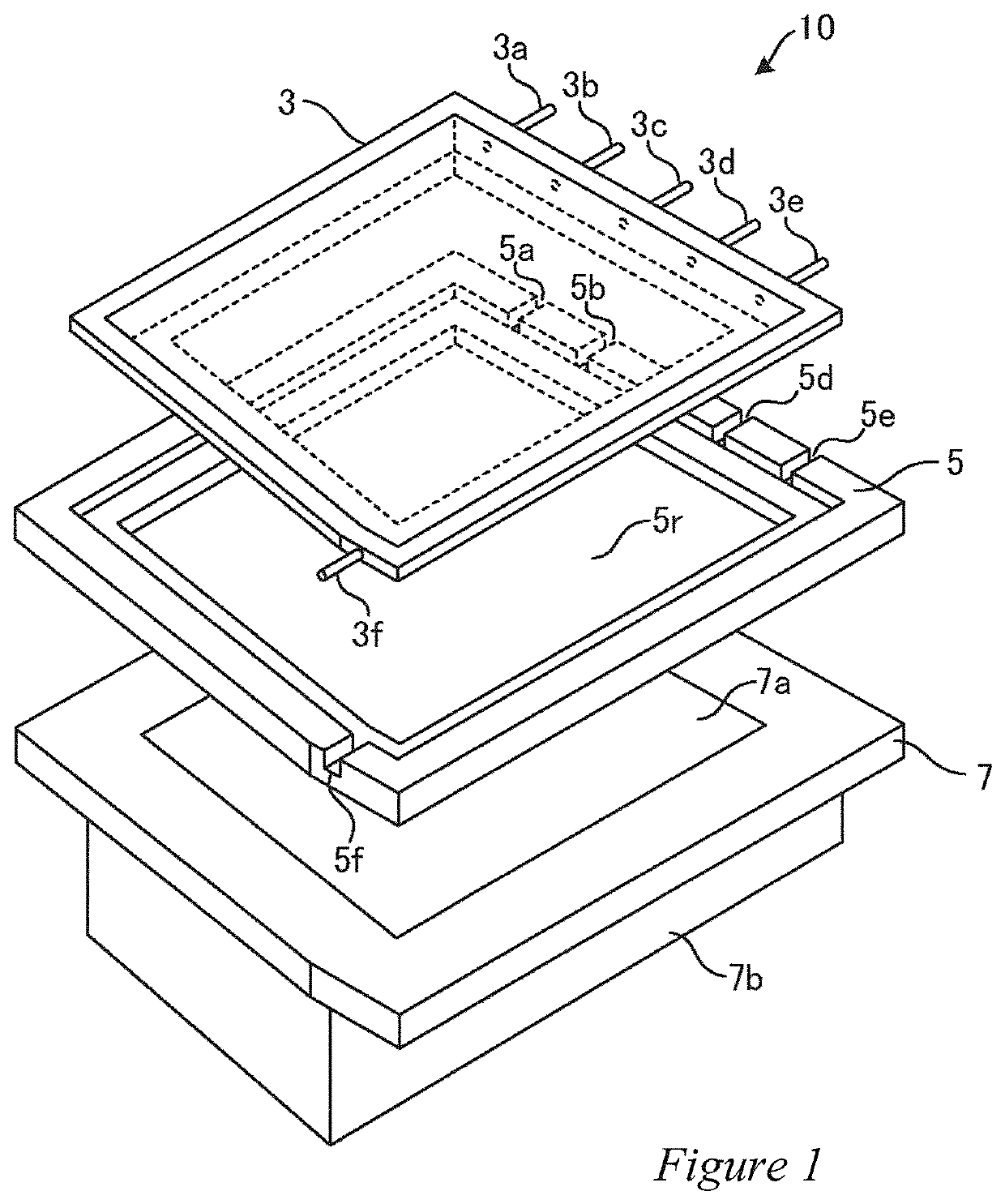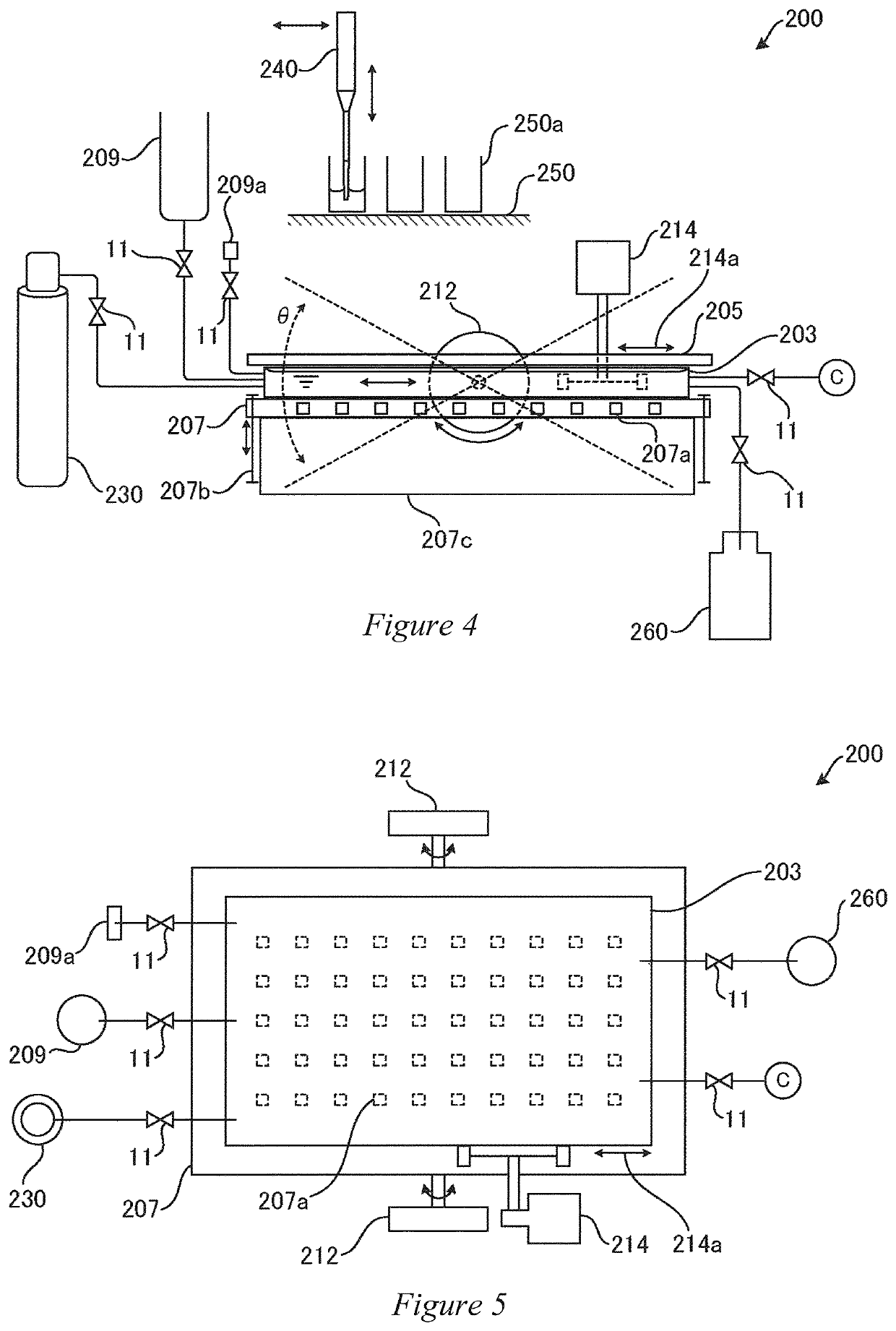Culture device, culture system, and culture method
a technology of culture device and culture method, which is applied in the field of culture device and culture system, can solve the problems of trypsin toxic to cells, unfavorable methods, and dead cells
- Summary
- Abstract
- Description
- Claims
- Application Information
AI Technical Summary
Benefits of technology
Problems solved by technology
Method used
Image
Examples
first embodiment
[0041]A culture device 10 according to a first embodiment of the present invention will be described with reference to FIG. 1. The culture device 10 is provided with a culture vessel 3, a temperature regulating unit 5 and a magnetic force regulating unit 7.
[0042]Referring to FIG. 1, the culture device 10 will be described. The culture vessel 3 has a thin internal space while the temperature regulating unit 5 is provided with a concave 5r, where the lower part of the culture vessel 3 is housed in the concave 5r of the temperature regulating unit 5. The culture vessel 3, the temperature regulating unit 5 and the magnetic force regulating unit 7 form a stacking structure. The temperature regulating unit 5 and / or the magnetic force regulating unit 7 may be provided on both or either upper or lower side of the culture vessel 3.
[0043]The culture vessel 3 may take a form of a thin layer with a thickness of preferably, but not limited to, 1.0 to 10 mm and more preferably 3.0 to 5 mm. Prefer...
second embodiment
[0066]A culture system 200 according to a second embodiment of the present invention will be described with reference to FIGS. 4 to 11. As shown in FIGS. 4 and 5, the culture system 200 is provided with a culture vessel 203 having a thin internal space, a temperature managing unit 205 disposed on the top surface of the culture vessel 203 and a magnetic force regulating unit 207 disposed on the bottom surface of the culture vessel 203. The culture vessel 203 is connected to a tilting mechanism 212 which periodically tilts the culture vessel 203 within an angle range of θ shown in FIG. 4. The tilting mechanism 212 may employ a motor. Preferably, the angle range of the tilting mechanism 212 to tilt the culture vessel 203 may be 10° to 20°.
[0067]The culture vessel 203 is connected to a sliding mechanism 214 which periodically slides (vibrates) the culture vessel 203 in the horizontal direction represented by the arrow 214a shown in FIG. 4. The sliding mechanism 214 can be realized by co...
example
[0093]The culture device and the culture system of each embodiment of the present invention are based on the premise that the cultured cells can directly or indirectly attach to the magnetic particles. In this example, an experiment was conducted on the attachment of the cultured cells to the magnetic particles, i.e., the above-described premise of the culture device. In the experiment, an ion-exchange resin carrier was used so that the cultured cells can indirectly attach to the magnetic particles. This experiment was conducted in order to confirm that the cultured cells can keep their shapes while bound to the carrier.
[0094]Reagents and consumables used for the experiment were as follows:
[0095]Cultured cell line: Jurkat cells (human, T-cell Leukemia, ATCC)
[0096]Medium: RPMI medium 1640 (Life technologies, 11875-093)
[0097]Fetal bovine Serum: Life technologies, 10437-028
[0098]Antibiotic: Antibiotic-Antimycotic, 100× (Life technologies, 15240-062)
PUM
| Property | Measurement | Unit |
|---|---|---|
| thickness | aaaaa | aaaaa |
| thickness | aaaaa | aaaaa |
| volume | aaaaa | aaaaa |
Abstract
Description
Claims
Application Information
 Login to View More
Login to View More - R&D
- Intellectual Property
- Life Sciences
- Materials
- Tech Scout
- Unparalleled Data Quality
- Higher Quality Content
- 60% Fewer Hallucinations
Browse by: Latest US Patents, China's latest patents, Technical Efficacy Thesaurus, Application Domain, Technology Topic, Popular Technical Reports.
© 2025 PatSnap. All rights reserved.Legal|Privacy policy|Modern Slavery Act Transparency Statement|Sitemap|About US| Contact US: help@patsnap.com



